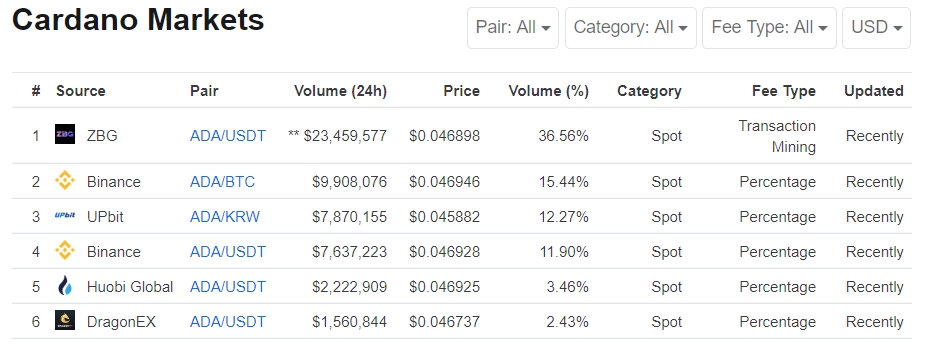
2018-7-26 22:00 |
In traditional markets, policymakers began aggressively ousting anticompetitive economic behavior following the rise of John D. Rockefeller and Standard Oil at the turn of the 20th century. Some of these displays have been made highly public, while others have slipped under the radar. Others, however, have toppled entire economies.
Nonetheless, nailing down the aspects that keep free markets free is one of the fundamental elements of society’s modern conception of capitalism. The same is also true for the emerging sector of crypto economics. Already bitcoin has begun to challenge our understanding of monetary policy and the rise of ICOs earlier in 2017 has also underlined the subtler points of the SEC’s Howey Test. From a policy perspective, the future is still fuzzy as collated data on the FinTech markets has only just begun revealing its promises and shortcomings.
Market Share of FinTechThe umbrella digitization occurring in the financial sector overall is complete with both striking advantages and perilous compromises. Critics have pointed out that we may even be moving towards an unknown future faster than we can understand its disadvantages.
The specific fields that fall into this debate include banking, payments, digital currencies, wealth and asset management, personal finance, insurance, and “enabling technologies and infrastructure” according to a July 2018 report from Finextra.
Each of the classifications offers a glimpse into entire markets unto themselves.
(Source: Finextra)
For the sake of clarification, the final point is also referring specifically to items such as interoperability. In the case of cryptocurrencies, interoperability spells secure transfers between a variety of different blockchains. It also means big business as the industry becomes aware of the reality that no one chain will rule them all.
Digging in a bit deeper into these classifications, “FinTech services related to payments and transfers showed the highest penetration among users [50 percent], followed by insurance [24 percent], savings and investments [20 percent], financial planning [ten percent] and borrowing [ten percent].”
Finextra also helped to define what “FinTech” means for the research group to identify both competitive and anticompetitive practices better. It is explicitly described as “IT solutions dedicated to the financial sector both from traditional and non-traditional entities,” and according to Deloitte, Central and Eastern European countries enjoyed a market size of $2.2 billion in 2016.
Exemplary of this growing market are the FinTech banks cropping up the world over. The UK, Spain, and in the continent of Asia all have “challenger banks” springing up against legacy systems. In Germany, there exists Solaris Bank, N26, and Fidor Bank, which was one of the first banks to help users buy and sell bitcoin back in 2013. Heavy-weight tech firms in Asia, including Alibaba Group and Tencent, both have their challenger bank products hauling in equally massive sums.
On a global scale, it was estimated “that the average percentage of digitally active consumers using FinTech services in 2017 was 33 [percent].” Looking at specific countries though, we can begin to see how averages are distorted when compensating for regulatory friendly environments:
“In Europe, the UK and Spain are the countries with the highest share of FinTech users, with 41 [percent] and 37 [percent] respectively. Germany, with 35 [percent], is the third European country above the global average.”
From the above graph, it becomes clear how much places like Silicon Valley and adoption rates in the EU have generated snowball effects in the respective regions.
(Source: Finextra)
Another buzzword tossed around in the FinTech space is “inclusion” or “banking the unbanked.”
When in the past patrons of formal financial institutions were required a massive paper trail to enter the global economy, these days, a simple internet connection will suffice. The give and take of government and citizenry in both China and India already bear witness to the previously unserved financial demographic. The report confirms this in the following:
“Between 2014 and 2017, the most recent data available, China shows a slight increase in the percentage of people who have an account bank (1.3 percentage points) while India has a relevant growth (26.8 percentage points). For the first time, the penetration of bank accounts in India is above the world average [68.5 percent].”
It’s important to keep in mind the fact that these figures also represent small and medium-sized businesses and their new abilities to take out loans, enjoy credit, and profit from novel payment methods. This is perhaps one of the strongest talking points in the space since its inception.
Addressing the ShortcomingsThese pieces of data are merely that, data. Without the proper context or willing analysis, they remain tools in the shed of economic commentary. In the case of India and China’s adoption of FinTech services, it is a double-edged sword. Even before opening the interrogation to anticompetitive practices, there are cultural elements of these two economies that are often overlooked in the wake of a so-called financial revolution.
First and foremost, however, are the positive notions that come with bringing more individuals and their businesses onto the world’s financial rails. This will only stimulate competition between regions, countries, and continents. The most poignant features of this are based on the massive internet penetration and “Leapfrogging” phenomenon that China and India have lanced to step ahead of western economies.
As a prime example of the technological leap, both of these countries skipped landline phones and moved directly to the adoption of mobile phones. A similar phenomenon is also occurring when small business owners, who lack formal financial aperture, begin leveraging the use of cryptocurrencies or digital banking.
In China, the country has embraced these changes with the exclusion of the ICO market. A digitized nation under a relatively authoritarian government is a highly attractive concept for Chinese authorities. Moreover, data-laden Tencent and Alibaba are following close behind the heels of large American firms like Amazon and Google. Huge conglomerates that allow users to complete all of their buying (and selling) needs on one platform is a cause for both concern and celebration depending on where you stand. Another way to put it, Jack Ma of Alibaba may become China’s first Rockefeller as he grabs hold of the passing FinTech wave of innovation.
These two tech giants are leveraging their massive data stores on citizens and launching them within relatively closed economies to great avail. Finextra explains the fusion of these ideas as such:
“Very high rates of internet and mobile penetration, a massive adoption of e-commerce and a closed and protected domestic market and economy have been the breeding ground for the development of FinTech.”
In India, another concern arises in the form of privacy, or lack thereof, following the arrival of digitized financial services. Explicitly, the introduction of a documentation directive titled, “Aadhaar,” which was launched shortly after the launch of the pioneer cryptocurrency and “has allowed 99 [percent] of the Indian adult population to be identified by digital means using biometric technology.”
In other words, a highly adopted state-sponsored surveillance system that has, according to sources close to the matter, led to the (often violent) censorship of many journalists speaking out against a potentially massive breach in individual liberties. The second aspect of this adoption rate, launched in 2016, removed the “500 and 1,000 Indian Rupees (INR) bank notes and gave a decisive stimulus to digital transactions.”
(Source: Finextra)
Both of these countries, for relatively similar reasons, are highly interested in bringing their respective populations onto traceable online networks.
This stimulus for adoption is also one of the most significant arguments for the use of privacy coins such as Monero (XMR), Zcash (ZCH), and the like. It appears that banking infrastructure is interested in adopting specific innovations as long as they better inform initiatives that serve them the best. Hopefully, in leapfrogging western economies, China and India don’t follow too close behind.
Anticompetitive PracticesMoving away from the human rights aspect of FinTech adoption, affirming hyper-competitive growth is the next obstacle facing the industry. According to The Organisation for Economic Cooperation and Development (OECD), “Anticompetitive practices refer to a wide range of business practices in which a firm or group of firms may engage in order to restrict inter-firm competition to maintain or increase their relative market position and profits without necessarily providing goods and services at a lower cost or of higher quality.”
Examples include price rigging, monopolies, and market manipulation, but can consist of other activities contrary to free markets.
In the case of cryptocurrencies, this competition (or anticompetition) is understood between currencies (“intracryptocurrency market”), exchanges (“intercryptocurrency market”), and all the pieces in between including mining, wallets, and payments.
Regarding the underlying protocol that propels many current cryptocurrencies, Finextra has identified the standardization of distributed ledger technologies (DLTs) as another competitive feature of the ecosystem that may need regulatory attention. The market entry becomes either more difficult or not depending on the types of blockchains being adopted. An example of this being the difference between adopting private blockchains developed by consortia such as R3, Hyperledger, and similar groups, or not. At current, none of these things pose severe problems to the market (everything is still hypothetical), but these are relevant predictions to keep an eye out in the next five to ten years.
Finally, the report unveils a fundamental paradigm shift that something like bitcoin offers: “These cryptocurrencies offer technological and operational paradigms that are a source of disruption for the entire sector, including monetary policy and financial stability.”
(Source: Finextra)
Thus, even if specific anticompetitive practices begin taking over, few legal authorities could stop something as borderless as p2p exchanges of value. This may be answered or responded to in the vague idea of a Central Bank issuing a private cryptocurrency. Unfortunately, this kind of move would easily squelch competitive environments as “the market power of banks in traditional banking services might be used to limit competition in the cryptocurrency market through pre-emptive acquisitions or predatory pricing schemes.”
It is a Catch-22 upon first glance and demands the featherweight touch of legislation that can be as forward-looking as they technologies they hope to wrangle in.
Concluding Points: Looking to the FutureAs different regulators begin to grasp the impact of the digitization of financial markets and the massive adoption of FinTech on different levels, legitimate concerns about rising monopolies must be equated. At current, policymakers view something like decentralized currency models as challenging to manage as nailing water to a wall. This problem is less of a question of education and more related to witnessing the rise of an immature market sector.
Things are incredibly open, but understanding how people are moving towards these technologies should be a part of any critical policy hoping to quiet things like anticompetitive behavior. Asking questions about why specific demographics are moving towards distributed networks like Ethereum or private B2B blockchains are crucial in developing an accurate perspective.
This fine combing of legislative arms must also take into consideration the problems that blockchains hope to address. The extensive collection of data “and the impact of algorithms on pricing strategies are the main factors that can lead to anticompetitive practices.” While network effects are essential for capturing and retaining value, these characteristics should also be admired in the context of market barriers.
What might end up being the case, in the end, is that a sector as inclusive as this one, may end up closing itself off from new entrants, innovations, and the critical ethos that began society’s move to the democratic financial model currently in question.
The post Defining Competition in the Upcoming Blockchain and Cryptocurrency Sector appeared first on BTCMANAGER.
origin »Global Cryptocurrency (GCC) íà Currencies.ru
|
|







